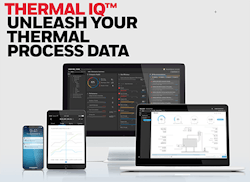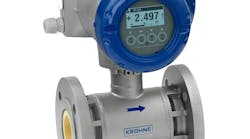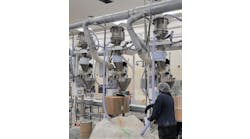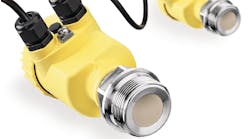Briggs is vice president and general manager of Honeywell Thermal Solutions.
Most companies are looking for meaningful ways to embark on a digital transformation. According to Chad Briggs, vice president and general manager of Honeywell Thermal Solutions, picking potential problems like regulatory, safety or efficiency and applying a solution that not only connects the user and collects the data, but also takes that data and helps the user visualize it, analyze it and provide a way to act upon it is where the true ROI is found.Chemical Processing spoke with Briggs about how to reap the benefits of digital transformation. “I think there’s a lot of data that is collected today. Very little of that data actually goes into a system where it can predict or prevent failure,” he says.
Here is the rest of that conversation, including insight into hydrogen combustion and its sustainability impact:
Q: How can plants take fuller advantage of thermal process data they already are gathering?
A: The whole thermal process industry is taking steps toward significantly improving data availability. While there is data available to a control system or a historian, that’s simply data gathering. That doesn’t meet the need of digital transformation, which would use that same data to help companies transform their business, competencies and revenue models.
There are obviously a lot of ways you can connect data. Honeywell harnesses the power of a cybersecure connectivity platform, advanced data analytics, and machine learning technologies to process that pool of data. Companies can use the connected devices and the integrated systems they have and capture real-time, process and analytics-based information to overcome several challenges prevalent across the thermal process industry. Top of mind for everyone is the need for enhanced safety and regulatory compliance, as well as the lack of visibility to critical thermal process information and the decreasing number of combustion specialists across the industry.
Q: What sorts of insights on process efficiency and optimizing operations can this approach lead to?
A: With a connected plant solution, customers are able to bring together historical and real-time process data from different systems in one place; and connect it to the cloud. The data can then be easily accessed, retrieved and analyzed by the stakeholders.
[pullquote]
Using this approach, thermal process plants can reduce the complexity of their assets and realize efficiency and operational benefits by leveraging multiple insights such as:
• Critical safety, reliability and performance related parameters, alarms and trends — revealing in-sights on thermal processes, which can be visualized by users on respective dashboards accessible on mobile devices and desktop computers, to quickly act before the breakdown happens;
• Benchmarking analysis between regions, plants and individual assets enabling quick identification of the bad actors; e.g., an air heating system in plant A is running at 20% lower efficiency than exactly the same systems in plant B and C);
• Capability to drill down to these bad actors and see the relevant performance KPIs and real time analytics driven recommendations to improve the asset performance;
• Fault-modelling analysis to provide insights on the repeatability of such anomalies.
Honeywell’s response to the demand for better remote monitoring is Thermal IQ™, a platform designed for organizations with limited tracking and limited remote access capabilities.
With Thermal IQ data, users can closely monitor thermal processes without being on site, get real-time alerts when key parameters stray outside normal limits, track historical data over time to identify when and why something happened and provide actionable recommendations.
Q: What role can it play for proactive maintenance?
A: Honeywell offers two different solutions based on the Thermal IQ platform: Thermal IQ Operate, an equipment- and process-level remote monitoring solution that provides process operators with real-time asset performance data on smart devices; and Thermal IQ Optimize, an enterprise-level, desktop-based remote monitoring solution that delivers real-time analytics and fault modelling with early event detection.
By using Thermal IQ Operate users can stay ahead of faults or potential failures, that can lead to downtime, with early alerts. That visibility also enables technicians to arrive at the equipment with the correct tools to fix the problem, while reducing maintenance costs.
With advanced analytics and fault modelling offered by Thermal IQ Optimize, thermal process users can now see failure coming even before they happen and hence plan the maintenance activities proactively without affecting the plant production significantly thus saving thousands of dollars in downtime.
A: There are two or three main drivers. There are obviously the environmental permits, but I think most manufacturers have moved beyond just compliance and are working on internally driven metrics to reduce their own consumption. Some of that is efficiency and financial driven but there’s a lot of corporate sustainability and responsibility goals that we see coming into each of our customer bases.
With the deepest, broadest portfolio of products in the industry for reducing both NOx and CO2 emissions, Honeywell is the only supplier with an end-to-end solution incorporating burners, valves, sensors and controls.
Complementing its product portfolio, Honeywell Thermal Solutions applies deep application knowledge to fine-tune each solution to achieve optimum results for specific use cases, from high-temperature metal and glass applications to low-temperature automotive and food manufacturing. For example, when firing a burner on hydrogen, the flame characteristics will be different compared to the same burner firing natural gas. The difference in flammability, speed of the combustion reaction, flame luminosity, flame length and changes in the flue gas composition will all have an effect on the process. This will have an impact on how the product is heated and how the combustion chamber or oven should be constructed.
Q: What is happening as far as burners for hydrogen?
A: We have been producing hydrogen burners for quite some time, so the concept of a hydrogen burner is not at all new to Honeywell. I think what is new in the market are the ideas around using hydrogen as a fuel in place of natural gas. And certainly, we have the expertise and capability to design those types of burners. Hydrogen combusts differently than natural gas. It’s a different fuel with many different criteria: combustion, speed, luminosity of flame, there’s a lot of unique challenges to combusting hydrogen.
The best approach to thoroughly understand how a burner operates with hydrogen-based fuels is to actually fire the burner and measure the results. The extensive testing capabilities of its R&D labs allow Honeywell Thermal Solutions to verify the performance of its burners and controls to ensure they fire these hydrogen fuels safely and reliably.
Honeywell has invested significantly in lab-based simulations and studies on how to best adapt burners for hydrogen firing. These learnings — together with extensive customer application testing and best practices gleaned from deep experience with thermal processes — have been channeled into its portfolio of hydrogen solutions.
Honeywell Thermal Solutions offers both hydrogen-ready and hydrogen-capable burners designed for a wide range of applications in markets like automotive, chemicals, construction, environmental, food, glass, metals, ceramics, gypsum, paper, power generation, printing and textiles.
Q: What sort of reductions in carbon dioxide emissions can hydrogen combustion provide?
A: Green hydrogen as a fuel would reduce 100% of the CO2 produced. I think the challenge with that is there’s not a lot of ways to produce fully green hydrogen in quantities to replace natural gas. So, we see hydrogen being used in some applications, but I don’t think it will be able to fully replace natural gas in most heating applications. Therefore, the blending solution that I talked about would allow higher natural gas networks to take only a part of hydrogen blended in with the natural gas. For example, if we took a blend of 20% hydrogen and 80% natural gas, and we took a continuously fired process around 10 million Btu/h, or about 3,200 kW, we’d get a reduction of about 1.1 tons per day of CO2, which would be equivalent to 400 less tons of CO2 per year (visit here to calculate your own CO2 saving with hydrogen).
Q: What differentiates Honeywell from other solutions?
A: We have a comprehensive offer. We have everything from the combustion equipment to the sensors. We have the ability to securely connect that to the cloud to do analytics on the data that is provided. I think whatever the application would be, we can provide a solution. As the industry continues to evolve, for sustainability reasons or for digital revolution reasons, Honeywell is at the forefront of all of those things in technology.
For more information, visit: ThermalSolutions.Honeywell.com.






